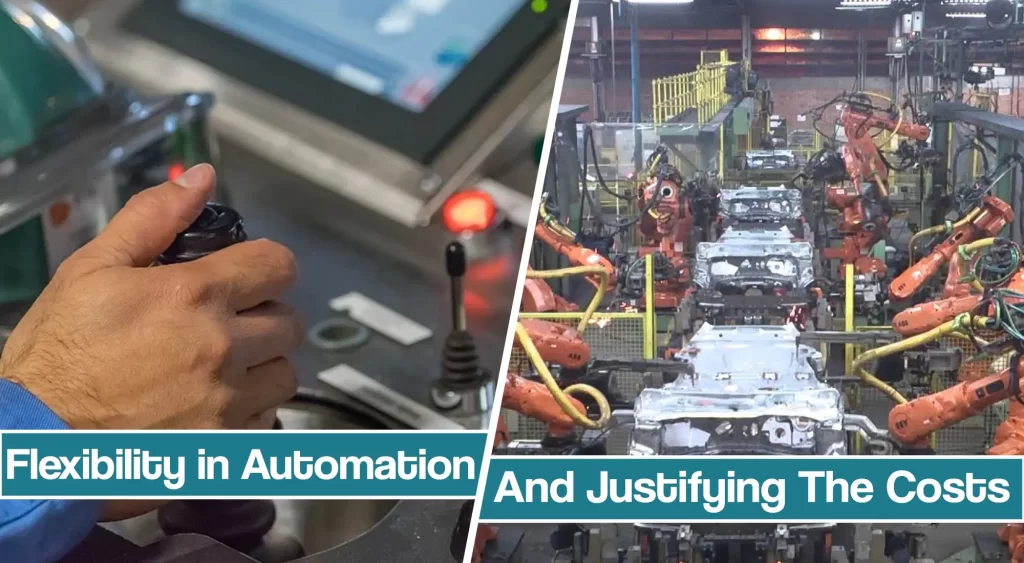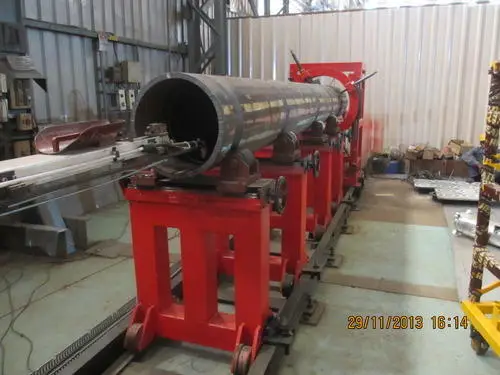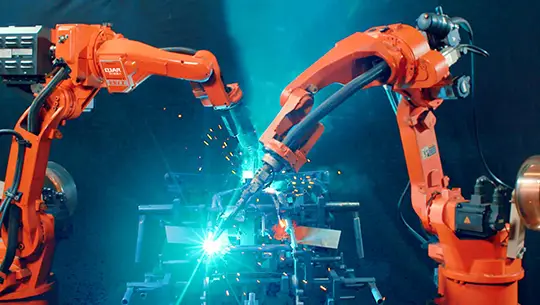Integrating the automation process into your business can be a challenging and complex task to do. There is a lot of consideration and planning alongside.
However, the biggest question that emerges is whether you should opt for a hard (fixed) or flexible automation process.

To help you choose, we will compare the advantages and disadvantages of both operations and how well each may (or may not) integrate into your established welding process.
Flexible Automation: What Does it Mean?
Unique welding and material handling applications require thinking outside the box. Most dictionaries define flexibility as being responsive to change adaptable. Therefore, flexibility in terms of automated manufacturing is being able to adapt your process to different options.

To describe it pretty straightforward, we can say that flexible automation allows a robot or system to be quickly and easily re-tasked to change product design. However, to explain the role of flexibility in automation, we must first talk about the opposite – hard or fixed automation.
Hard Automation
Hard automation is primarily used for jobs and projects that involve long, repeatable welds. For example, fixed automation is cost-effective, and it thrives when welding pipe on a turning roll or a large I-beam.
Therefore, we can define hard automation as an application customized around a single product and a specific task.
Initially, hard automation is easier to retool and adjust to fit the needs of multiple workpieces. In addition, little to no skill in programming is required. Therefore, if you opt for hard automation, you won’t have to hire highly-skilled programmers to maintain and operate the robots.

A lesser number of specialized workers directly cut the overall costs. In addition, the initial prices of incorporating hard automation equipment are significantly lower.
However, once your job starts involving more complex parts such as many turns, angles, and tight spaces, the utility of hard automation starts to fall off. This is because most equipment in hard automation welding lacks the movement and accessibility needed for more complicated jobs.
What happens often is that once the particular part reaches the end life-cycle, the automation equipment would typically sit in storage until someone figured out how they could re-purpose it.
So, you can definitely notice where flexible automation starts to shine.
Flexibility in Automation
As more and more manufacturers start to face the challenge of low volume and/or a high mix of parts, a more dexterous and flexible solution is required.
When adequately utilized, a flexible automation cell can improve efficiency by evolving with your process and demand. In addition, flexibility in automation reduces production costs while enhancing the quality and eliminating health and safety issues.
As it stands, flexible automation mostly thrives in high-volume production circumstances that manufacture specific parts, with only slight changes.

Once you program a robot, you are most likely only left with tooling, fixturing, and part variance. So by introducing flexible automation, you will have more increased production numbers and less downtime correcting disfavored welds.
As an example, let’s consider automotive production. Flexible robots in automation change the orientation of the torch to weld numerous different parts, such as car doors. Getting the same results with hard automation would be practically impossible.
So yes, flexible automation sound outstanding, but we cannot disregard the elephant in the room – initial cost. Flexible robots can be super-expensive, but it doesn’t end there. To install the robots, you will need supportive gear such as manipulators, turntables, rotators, etc.
In addition, even though the whole process is automated, you will still need an operator to take care of the machines. Hiring a programmer that takes care of the robots just adds the cost.
Justifying the Costs
Even though the initial investment is enormous, by adapting and re-tasking on the fly, you can keep production costs fixed whether you are manufacturing a small batch or a large run of parts.
How do costs compare when considering hard, flexible, and manual labor?
There are several different answers if we are looking at a return of Interest. When the job includes making the same part repeatedly, fixed automation takes an edge. Once the number of pieces starts to rise, manual labor takes over. However, flexible automation can keep your costs in line and have a much quicker ROI for a high mix of different pieces.
How Do You Choose Between Hard and Flexible Automation?
When deciding to automate your process, including the type of equipment, you should consider a couple of things. Mainly, those are the part’s complexity, required volume, and time spent on each part compared to the initial investment cost.
For example, hard automation is a great starting point for anyone who wants to integrate automation into their process. On the other hand, flexible automation will most likely benefit large operations that manufacture specific parts or products.
You can even opt for a mixed approach, where you can take advantage of the good sides of both automation processes. Finally, with all the technological benefits, the world is your oyster.
How Manufacturers Dealt With Flexibility Requests in Past
In the past, automation was considered a big step in advancing the business, mainly because it was expensive. However, several manufacturers had to deal with quite specific requests. One of them was Industrial Robot Supplier and Manufacturer – ABB.
Even though the majority of all welding robots are used for MIG welding, they deal with specific requests. One of the most unique automated welding cell projects they developed replaced atomic hydrogen welding with powder feed plasma overlay welding.
The effort resulted in ARC 6 project. This robot was able to handle the part manipulation during the welding, with integrated loading and unloading of the parts. This project offered a significant breakthrough in automation, and manufacturers achieved it just by introducing flexibility.
Today, robots are pretty capable of doing multiple operations besides welding. That’s how the efforts in the past changed the automation industry for good.
Final Thoughts
Flexible automation, without a doubt, offers excellent solutions when it comes to the mass production of complex parts and tasks. However, before introducing it, you should consider several things.
Fixed automation offers the highest return of interest when dealing with a low-mix production, such as the same part. On the other hand, the high initial investment of flexible automation quickly pays off when working with a large quantity and variety of complex pieces.
Sources:
- Flexible Automation at Georgia Tech Manufacturing Institute
- Flexible or Hard Automation? Why?
- Technical Guide: Improve Efficiency with Flexible Automation at Cross company
- The Importance of Flexibility in Automation and Manufacturing at miqpartners.com
- Robots: Flexible Automation for a Strong Economy at automate.org




